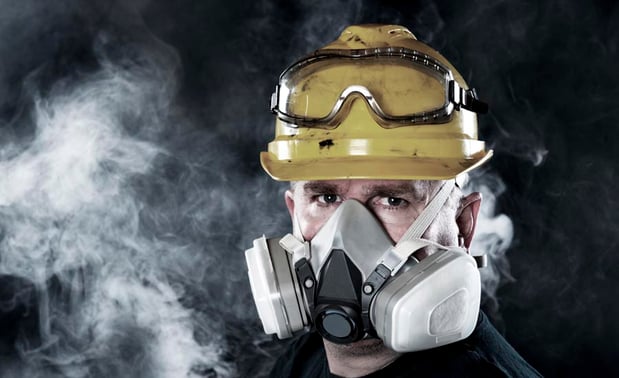Understanding the new OSHA standards for Silica dust in the construction industry.

Silica is ever-present around us and in the air we breathe. Silica is present in most construction materials, such as concrete, mortar, block, brick, asphalt, stone... The percentage of silica varies by material and geographic location. When these construction materials are cut, drilled, ground it can generate airborne dust containing respirable Crystalline Silica - RCS.
When RCS enters the lungs, the particles inflame and can “cut” into the lung tissue. The lung then scars over these affected areas. Because a respirable particle is very, very small, the scar is irrelevant. However, if enough particles are inhaled, at some point the “cumulative” scarring results in a noticeable diminution in lung capacity – this is “silicosis”. The damage is irreversible. Silicosis increases the risk other diseases, including tuberculosis, cancer, and chronic bronchitis.
According to the CDC silicosis can be “acute” (shows up in weeks-to-years from extremely high-level exposure), “accelerated” (shows up within 10 years of high-level exposure); or “chronic” (shows up in 10-30 years of over-exposure).
KEY POINTS FROM THE NEW SILICA DUST STANDARD
- The new standard requires a more stringent “permissible exposure limit”, moving from approximately 250 micrograms per cubic meter of air over an 8 hour day (time weighted average) to 50 micrograms per cubic meter of air over an 8 hour day
- OSHA offers three methods an employer can choose from to demonstrate compliance and assess employee exposure:
- Table 1: A table of pre-defined tasks and specified control methods available in the market today
- Performance or “Objective Data”: Assess exposure by providing objective data proving the control method used reduces silica dust exposure below the permissible exposure level (50mg)
- Scheduled Air Monitoring program: Assess exposure by implementing a scheduled air monitoring program to ensure employees are not exposed above 50 mg
- Employers are required to have a written exposure control plan
- Medical surveillance (exams) must be offered for employees required by the standard to wear a respirator for 30 or more days per year.
The current effective date is for construction is September 23, 2017, however OSHA may delay this date. The current published schedule for all industry is:
Industries have one to five years to comply with most requirements, based on the following schedule:
Construction - September 23, 2017. OSHA delayed enforcement in order to conduct additional outreach and provide educational materials and guidance for employer.
General Industry and Maritime - June 23, 2018, two years after the effective date.
Hydraulic Fracturing - June 23, 2018, two years after the effective date for all provisions except Engineering Controls, which have a compliance date of June 23, 2021.
For information on how to set up a safety program contact our Risk Management Team
The OSHA Factsheet on this updated regulation can be downloaded here



















